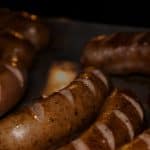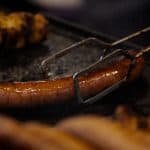Some people prefer coffee drinks with higher levels of caffeine, while others prefer roasts with lower amounts. Arabica beans are preferred by some people, while Robusta beans are preferred by others. Some claim that the best coffee comes from Colombia, Ethiopia, or Costa Rica.
Some prefer a pour-over, some prefer a drip brew, and some prefer a French press. Cold or iced tea is popular among some people, but some prefer hot tea. Some coffee lovers will only drink fair-trade gourmet coffee while others will drink any old cup of joe. No matter how many ideas and preferences you may have about coffee, one of the most important things to understand is the difference between roasts. A large number of people prefer a darker, more flavorful roast instead of a light roast. However, making that decision isn’t always the right decision (or even the best option).
Including lighter roasts, we think there is a time and a place for everything. Not sure if you agree? Light roast coffee can be served at these times and in these ways.
What is Light Roast Coffee?
The type of coffee bean has nothing to do with how the coffee is roasted. As a result, it has to do with the roast level. When we refer to light roast coffee, we mean beans that are yellowish-tan to light brown in color. Light roasts are the palest roasts in comparison to medium and darker roasts. In general, the darker the roast, the darker the color of the bean.
Light roast coffee has a lot of natural flavors. A lighter roast has a brighter flavor, is sweeter, and has a greater degree of acidity. Because of the roasting process, some of these natural flavors disappear. Light roast beans are processed for the shortest amount of time, so they retain more of those flavors and acids.
Light roast coffee tends to be more complex, less bitter, and contains more antioxidants than darker roasts. Starbucks and other national coffee chains sometimes refer to a light roast as a blonde roast. Perhaps it’s time to give it a try.
What Is the Process of Roasting Light Roast Coffee?
All coffee beans start life as seeds of the coffee cherry fruit, which grows on the coffee plant.
After the coffee plant is ready for harvesting, the cherries are picked (usually by hand). The coffee cherries must be dried and the outside of the fruit removed. At that point, the green coffee beans inside are ready to be extracted from the fruit.
After the seeds are removed, coffee roasters can begin roasting the whole beans. For a bean to have the best flavor and final result, the roasting process is crucial. As the roasting process continues, the beans will become darker. The shorter the roasting time, the fruitier the taste of the beans. When beans are roasted for a long time, they tend to taste more burnt.
To toast their beans, some coffee roasters use drum roasters, while others use flatbed roasters. It takes heat to roast the beans to perfection, and that heat can come from a direct flame, an indirect flame, or hot air.
The Myth of Caffeine
There is a common myth that there is a significant difference in caffeine content between light roasts and dark roasts. While the flavor of a light roast differs substantially from that of a dark roast, the difference in caffeine content is very slight. People claim that light roast coffee has more caffeine since the caffeine isn’t lost in long roasting processes. There’s no truth to that.
The size of dark roasted beans increases as they roast, but their density diminishes as they do so. There are fewer individual beans in a tablespoon of dark roast than in a tablespoon of light roast because dark roasts are less dense.
On the basis of that measurement, yes, there is more caffeine in a tablespoon of light roast, simply because the bigger beans have more caffeine.
However, no one makes a cup of coffee based on the size of the bean. Coffee is made based on the mass or weight of ground coffee. When you compare ground light roast beans to ground dark roast beans, the amount is pretty much the same. In addition, caffeine is present in a lot of foods.
Brewing Light Roast Coffee
Drinking weak, flavorless coffee makes absolutely no sense. As all beans undergo a similar roasting process, many people make the mistake of brewing a light roast the same way they do a dark roast. There are, however, some tricks to making a light roast taste even more flavorful than it already is.
Are you ready to learn how to make the best light roast coffee?
You need to pay close attention to three things:
- Your coffee grounds’ size
- Your water’s temperature
- Brewing time
There is less porous surface in light roasted coffee beans compared to dark roasted coffee beans. Due to this, it’s harder to fully extract the flavor compounds during the brewing process. Because light roast beans are removed from the roasting process before they crack, they are less porous.
Cracking of the bean occurs when all the water inside the bean has been vaporized. Light roasted beans finish before this step, so they do not go through the cracking process. As a result, it is more difficult to extract the flavor of the beans.
You should start with a small amount of ground beans if you want to get the most flavor out of them. The bigger the grounds, the less taste you’ll get. Using hotter water and extending your brew time can also assist with releasing those fantastic flavors.
French presses or pour-over methods are better suited for brewing light roasts than automatic drip coffee makers. Those methods naturally have a longer brewing time, so they are best for getting the most flavor out of those little beans.
Drink Your Light Roast Hot
Different roasts lend themselves to different coffee drinks. You would never make espresso with a light roast, for example. A dark espresso roast should only be used for straight espresso and espresso-based drinks (Such as the Americano, cappuccino, mocha, or macchiato). We also have compiled a guide that will help you choose the best coffee beans for espresso.
Light roasts are ideal for people who prefer black coffee, coffee with milk, or coffee au lait. These might seem to be the simplest of all coffee drinks. However, the additions you make as well as the brewing process can significantly influence the taste.
Your local neighborhood baristas probably brew coffee using these methods:
- The French press
- The Aeropress
- Coffee brewed with a Chemex pour-over maker
- or a Moka pot.
Using a different method to brew coffee other than your countertop Mr. Coffee is not as daunting as it may seem. It just takes a little practice. Light roast coffee, which has less flavor, will be enhanced by methods that extend the brewing time. You can grind those beans, brew a cup, and enjoy your light roast piping hot. How you take your coffee is entirely up to you. Add cream, non-dairy milk, sugar, or nothing at all.
Drink Your Light Roast Cold
Are you not in the mood for a hot cup of coffee? In iced coffee on the rocks or cold brew, lighter roasts taste great. When drinking your coffee iced, you may opt for a dark roast out of concern that melting ice will only dilute the flavor.
However, there is a way around that:
Make your light roast stronger! When brewing your coffee to double strength (or more), lower the ratio of coffee to water to make a more robust cup. Light roasted beans also make a delicious cold brew. For cold brew coffee, you need to steep the coffee beans in water for about twelve hours before you can drink it, as opposed to iced coffee, which is hot coffee that is chilled and poured over ice. The result is a delicious iced cold brew coffee that can be consumed straight, added to ice, or poured over ice.
Is Light Roast Coffee Better Than Dark Roast Coffee?
There are a number of differences between light roast coffee and dark roast coffee.
They have different flavor profiles. There is a difference in the texture and mass of the bean. Various types of coffee drinks benefit from their use. It is, therefore, unfair to say one is superior to the other since it all comes down to your preferences and what your palate enjoys.
You can drink a light roast regardless of whether coffee snobs say so or what the latest trends are. You can have a cup of it for breakfast if you like it. It is a good midday drink, but you might have it after lunch as well. To enjoy with dinner, serve some with cheese or a sweet, buttery dessert.
When it comes to coffee, there are many opinions about how to drink it and how not to.
Was this helpful?
Hi there! I’m a food enthusiast and journalist, and I have a real passion for food that goes beyond the kitchen. I love my dream job and I’m lucky enough to be able to share my knowledge with readers of several large media outlets. My specialty is writing engaging food-related content, and I take pride in being able to connect with my audience. I’m known for my creativity in the kitchen, and I’m confident that I can be the perfect guide for anyone looking to take their culinary journey to the next level.







